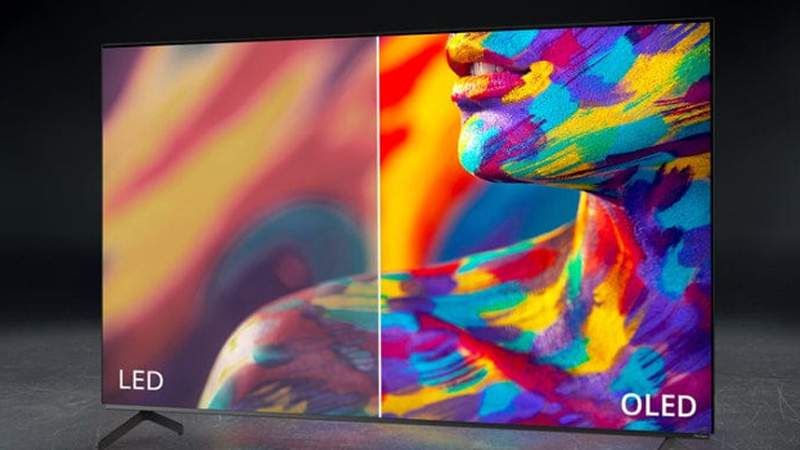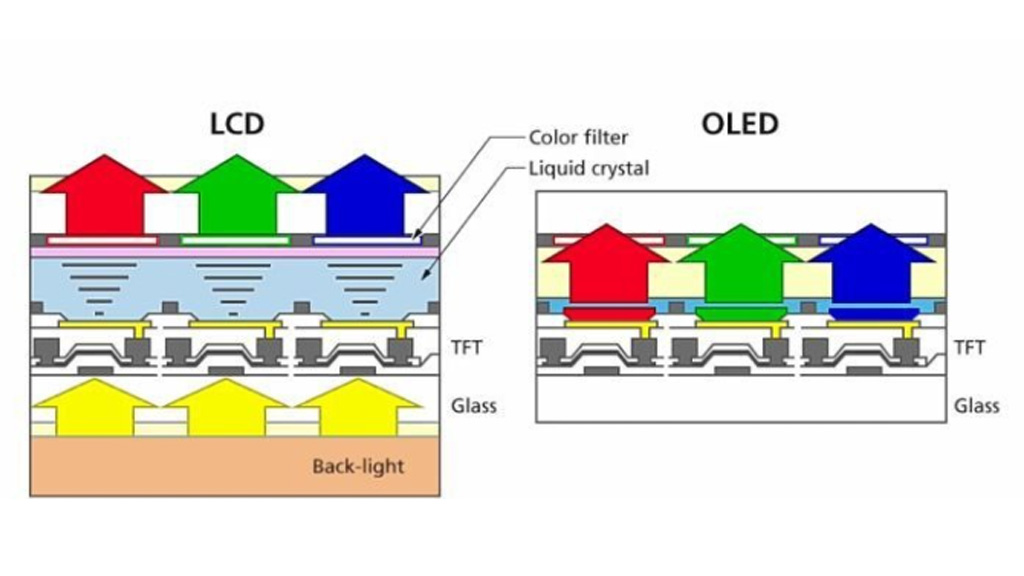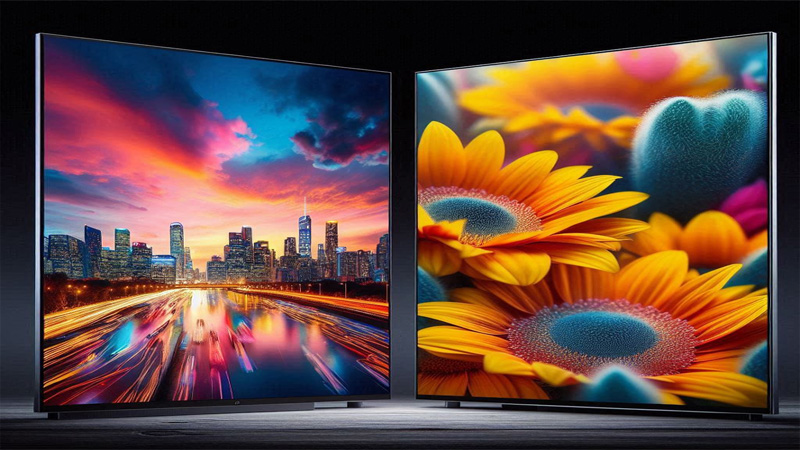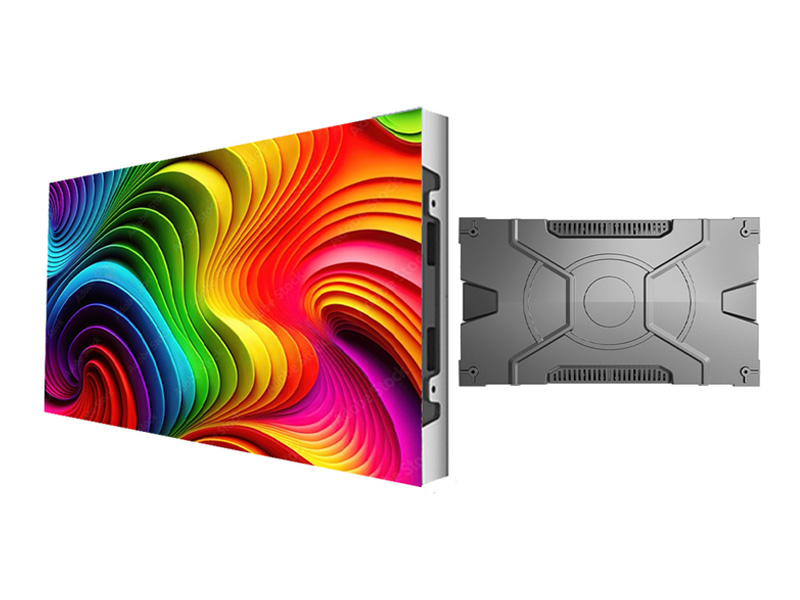LCD Display vs OLED: Which is Right for You?
In today’s tech world, one of the most common questions customers face while purchasing their dream device is between the LCD and OLED screens. LCDs are described as being bright and energy efficient, on the other hand OLEDs have high color quality and contrast. Yet, this guide will assist you in learning of these technologies to make the best choice for you.
Content Index
1. Comparing LCD and OLED Screen Technologies
2. Comparing Picture Quality: LCD vs. OLED
3. Analyzing Color Accuracy: Comparing LCD and OLED
4. Exploring Contrast Ratio: LCD vs. OLED Showdown
5. Evaluating the Lifespan: OLED vs. LCD
6. Assessing Energy Efficiency: LCD vs. OLED
7. Evaluating Cost: Is OLED Worth the Premium Over LCD?
8. Bright and Efficient Displays for Every Need
There are two primary forms of screen technology, namely Liquid Crystal Display, and Organic Light Emitting Diode. LCD shines a backlight through the liquid crystals, but OLED creates light from organic compounds present in each pixel.
Key Points of Each Type Include:
● The common types of displays include LCDs, which are inexpensive and penetrate well when driven by the sun. It also consumes less power when displaying the images thus appropriate for laptops and smartphones for bright images.
● OLEDs stand out due to the direct illumination of the pixels, and because the contrast is very high and images have accurate blacks. They also have better viewing angles and compared to LCDs have a higher refresh rate.
The basic performances of LCDs and OLEDs are stated below however their performance varies according to the type of their implementation. For instance, there is light emitting diode backlight type, liquid crystals’ quality and design impacting the LCDs. Likewise, OLED device performance depends on the efficiency of the organic materials used in the LEDs and the pixel occupations.
While discussing the two types of screens, namely, LCD and OLED screens, you’ll find the element of picture quality as the most significant one. OLED display also provide deeper blacks than other types, and this is good for contrast ratio.
This is because, every pixel in an OLED screen can be turned off, and thus, deliver true black plus high-quality images when in the dark. whereas LCDs use backlight which means that blacks are not as deep, and contrast ratios are relatively low
As for color reproduction and intensity, these two technologies also vary. OLED screens are usually characterized by a wider color gamut offering a richer color spectrum and more natural colors. Although, it is necessary to mention that you might find OLED colors oversaturated. LCDs generally provide more normal colors; however, they are not as bright or true to color as OLEDs.
Other factors are in the view angles One must always balance between one’s wishes and reality. The viewing angle is almost perfect on OLEDs and the aspect does not influence picture quality no matter from which position is it observed. This is a major advantage over the LCD which has issues of color and contrast shift with the changes in viewing angle.
Key Points to Consider:
● OLEDs provide deep blacks and high contrast.
● OLEDs usually have a wider color range than LCDs.
● OLEDs maintain consistent picture quality from all angles.
● LCDs often produce more natural colors.
● LCDs can show color and contrast shifts when viewed from an angle.
Considering the color accuracy of contemporary display technologies, you will find the distinction between, for instance, LCD and OLED is quite apparent. Except for the fact that they can produce a pitch-black background and hence higher contrast ratios, OLED screens are also valued for their color reproduction qualities. This is because each of the pixels in an OLED screen is independently illuminated, enabling the shape of both the hue and intensity of light that is emitted.
LCDs create light by operating a backlight that is behind the screens which sometimes results in degradation of color reproduction in dark regions. Nevertheless, it must be mentioned that there are quality LCD panels with the latest technologies such as Quantum Dot, which can be rather close to the accuracy of colors provided by OLED panels.
Contrast ratio is a crucial element in display technology, and it profoundly affects your viewing experience. OLED displays are famous for their infinite contrast ratios. This is because each pixel in an OLED can be individually turned off, achieving true blacks and creating vibrant, lifelike images, especially in dark scenes or low-light settings.
● OLED displays can reach infinite contrast ratios due to their unique pixel illumination.
● True blacks are possible with OLEDs because individual pixels can be completely turned off.
● This capability contributes to OLED’s vibrant and realistic image quality.
Conversely, LCDs use a backlight to illuminate their pixels, preventing them from achieving true black since some light always leaks through. As a result, LCDs typically have lower contrast ratios compared to OLEDs. Despite advancements like Full-Array Local Dimming (FALD), which improves LCD contrast ratios, they still can’t match the infinite contrast of OLEDs.
● LCDs have lower contrast ratios because of backlight illumination.
● True black is unattainable on LCDs due to light leakage.
● Even with improvements like FALD, LCDs can’t achieve the same contrast ratios as OLEDs.
When you consider the lifespan of OLED and LCDs, you will find each technology presents its own set of strengths and weaknesses. OLED screens are celebrated for their rich colors and true black levels, but they tend to degrade over time, particularly the blue pixels. This degradation can result in a “burn-in,” where static images leave a permanent mark on the screen.
● OLED screens offer vivid colors and deep blacks but can suffer from burn-in over time.
● LCD screens tend to last longer and avoid burn-in but may experience backlight and color issues.
LCD screens generally have a longer lifespan and are less susceptible to burn-in issues. However, they are not without their problems, such as potential backlight failure and gradual color degradation. While LCDs might last longer overall, the best choice between OLED and LCD depends on how the display will be used and your specific needs.
Certainly, energy efficiency is one of the important things that you should take into consideration when opting for an LCD or OLED screen. Comparatively, OLED screens are regarded as more energy efficient than the other types of screens because of their ability to illuminate those pixels that are required for the picture.
This leads to a reduction in the power consumption of dark images, thereby, OLEDs could be more efficient where most parts of the image Stay dark most of the time. However, if the screen spends most of its time with bright or white pictures, OLEDs end up consuming more energy, because all the pixels are activated.
On the other hand, the LCD screen uses a constant backlight that is independent of the image displayed on the screen. That is why their power consumption is steadier, besides, these parameters go up and down in dependence on the image brightness. Consequently, it is possible that there would be slightly less efficiency concerning dark pictures, but LCDs have comparatively greater efficiency in bright, or even white, pictures.
When it comes to comparing OLED and LCDs, the price is one of the main factors for your consideration. OLED screens are generally more expensive as compared to other screens because of the better technique used and material required. This is typically due to various advantages over the conventional LEDs including sharpness, deeper contrast ratios, and faster refresh rates.
Although LCDs are cheaper most of the time because this technology is older and the screen manufacturing is easier. It is admitted that, compared to OLEDs, LCDs have certain shortcomings in terms of color gamut and contrast but in general they offer good image quality and can improve upon the lifetime of the devices. It also has a longer life span free from the danger of burn which is a problem experienced on OLED panels after long-term use.
Now, it is up to you to decide whether to go for an OLED or LCD depending on your desire and pocket size. However, the factor of picture quality and extra costs in which OLED comes in when you are willing to spend more. Nonetheless, if money is the main concern and the exception of high performance is not excluded, it is better to use an LCD display. Choose the display that sets out the requirements most and that also suits your pocket.
-
Indoor LED Displays:
SA-640-Series: Get blurless and sharp images with a 320 x 160mm module and a 640 x 480mm cabinet.
600-XA-Series: We would also recommend choosing a hard connection with a 300×168. 75mm reserved for the rear-facing camera, while the front-facing is a 600 x 337 module. 5mm cabinet.
-
Outdoor LED Displays:
RM-960-Series: The rear service provided is dependable with the module of 320x160mm and the cabinet of 960x960mm.
FM-960-Series: A front and rear access with a 320×320 mm module and a 960 x 960 mm cabinet size.
FV-960-Series: Dom with front and rear access containing a 480 x 320mm module and a 960 x 960mm frame.
-
Energy-Saving Displays:
ES-800-Series: Optimizing design at the level of a 400x300mm module and an 800x900mm cabinet.
ES-960-Series: Designed for 3D billboards with energy-saving functions, a size of 480x320mm and a cabinet size of 960 x 960mm.
ES-1000-Series: The highest energy efficiency is provided with front service, providing the 500x250mm module and the 1000x1000mm cabinet.
![]() Front-end Convenient Maintenance
Front-end Convenient Maintenance
![]() Cabinet Size: 600*337.5mm/16:9 Ratio
Cabinet Size: 600*337.5mm/16:9 Ratio
![]() Compatible with 300*168.75mm Module
Compatible with 300*168.75mm Module
![]() With 3 Years Warranty and 5% Spare Parts
With 3 Years Warranty and 5% Spare Parts
![]() Front Convenient Maintenance
Front Convenient Maintenance
![]() Hard Connection, No Need Cables
Hard Connection, No Need Cables
![]() Can Removable Back Power Supply Box
Can Removable Back Power Supply Box
![]() With 3 Years Warranty and 5% Spare Parts
With 3 Years Warranty and 5% Spare Parts
9. Bottom Line
To sum up, if you decide between LCD and OLED, you should define what matters most to them. Thus, considering the aspect of costs, as well as the shelf-life of the technology, LCD is a worthy contender. However, if you understandably want those vivid colors and that high contrast ratio, then yes, OLED might be well worth the additional cost. Besides these factors, comparing the desired factors with your preferences will lead you to the best option that you need.
Contact
 Building D, Hongfa Science Park,
Building D, Hongfa Science Park,
2035 Songbai Road, Shiyan, Bao’an District, Shenzhen, Guangdong, China.











